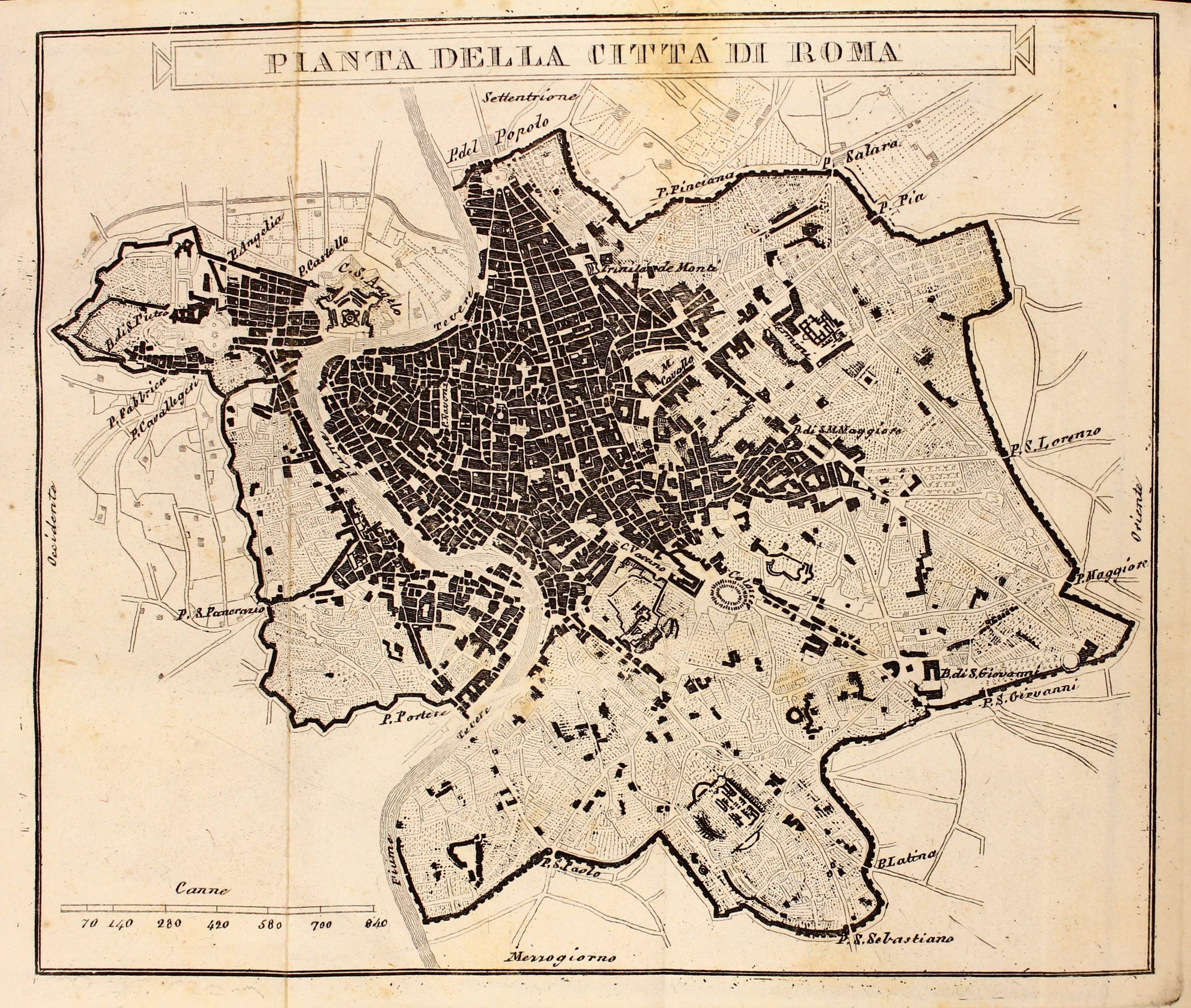
During the 19th century, there were undoubtedly two Romes: the first, ruled by Pope-King Pius IX, before the Unification (1846-1871), and the second post-Unification (from 1871). A small village based on agriculture and farming, Rome was the capital of a culturally and economically regressed state, but from 1871 onwards the city gradually underwent an ongoing development and expansion. New districts were built from scratch in the east (Esquilino, Termini, Castro Pretorio) and north area (Prati). The urban image was redesigned, with the construction of new major roads (such as via Nazionale) and of the embankments to contain the floods of the Tiber. Rome’s development and population grew thanks to a constant immigration flux from the North (aristocracy, upper middle classes, public officers) and from the centre of Italy (working class): the city changed, so did its culture, its music, and its language. Without taking into account the private houses, the academies and villas, Rome’s musical topography is quite simple to define, the music events and proposals being scarce in terms of both quantity and quality. Operas were performed at Teatro Apollo and Teatro Argentina (Teatro Costanzi opened only in 1880) and at the Roman Politeama, built around 1870, during the summer season. Operettas were performed at Teatro Valle and Teatro Rossini (founded in 1874). Other genres such as the vaudevilles, the parodies or comedies with songs in Roman dialect or – after the Unification – in Piedmont dialect, took place at Teatro Metastasio and Teatro Capranica. Whereas chamber and symphonic music were performed at the Sala Dante (inaugurated in 1866) that for many years was the only public concert hall dedicated to music events other than operas. After the capture of Rome, the traditional popular feasts survived for a few years: in Rome and in the rest of Europe, these ceremonies still aroused a lot of interest. The Roman Carnival, for example, that for centuries remained one of the main attractions of the city, was second only to the Carnival of Venice. Although celebrated still today, its main attraction – the race of Berber horses – was abolished in 1874, thus decreeing the end of this glorious tradition. There was also the Feast Day of St. John celebrated on the summer solstice in the district the bears the saint’s name; or the feasts with fireworks called the Girandola at Castel Sant’Angelo; the serenades and bell-ringing (scampanacciate) in the town centre: all these events were accompanied by a vast and specific repertoire of popular music. Despite the battles between the Vatican and the Kingdom of Italy that were often more a front than real, the amount of sacred celebrations and ceremonies (masses, feasts days, processions, and so on) remained unaltered. And so did the many musical institutions connected to the Catholic Church: i.e. the choirs of the major basilicas (San Pietro, San Giovanni, Santa Maria Maggiore), the academies (particularly Santa Cecilia), the choirs of the parish churches and confraternities.
The shift of the political and cultural centre of the city is emblematic: from Piazza San Pietro it moved to the Quirinale, whereas the Campidoglio assumed a greater importance in Rome’s topography. There were multiple parades and military bands, o a certain value, displayed in the most important or more picturesque squares: piazza Navona, piazza Colonna, the terrazza del Pincio. On the one hand, they reinforced the image of the state by offering a soundscape to all the public and state ceremonies (such as the first anniversaries of the Kingdom, the plebiscites …); on the other hand, they performed the most successful music in vogue at the time: Strauss waltzes, opera highlights, wind music and military marches.